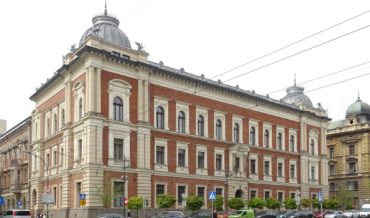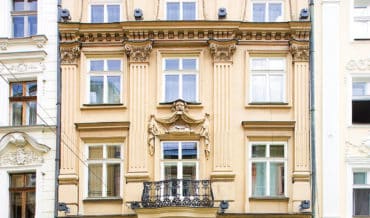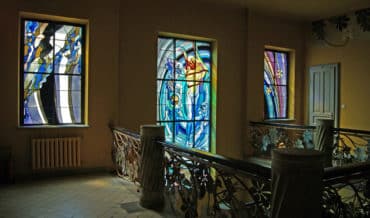Contents
Key Facts
• Ukrainian landlord who made a transformational donation to Krakow's Academy of Fine Arts in 1884
• Final member of the Barczewski dynasty, ending a distinguished family lineage
• Donated 50,000 Austro-Hungarian guldens – equivalent to approximately 15-20 years of average professional salary
• Established the prestigious Barczewski Prize Fund that operated from 1886 to 1939
• Supported renowned Polish masters including Jan Matejko, Jacek Malczewski, and Stanisław Wyspiański
• Created a selection committee famous for its detailed and often candid rejection reports
Historical Context and Background
Probus Barczewski was a wealthy Ukrainian landlord from Galicia whose philanthropic vision in 1884 created one of the most significant cultural legacies in Polish artistic history. As the final representative of his noble dynasty, Barczewski made a deliberate choice to channel his family's accumulated wealth into supporting Polish cultural heritage, despite the complex political landscape of the partitioned territories.
The late 19th century marked a crucial period for Polish cultural identity. Under Austrian rule within the Austro-Hungarian Empire, the Małopolska region enjoyed relative cultural autonomy compared to territories under Prussian or Russian control. Krakow, as the former royal capital centered around Wawel Castle, served as a vital center for Polish national consciousness and artistic expression. The Academy of Fine Arts, established in 1818, had become the premier institution for training Polish artists, making Barczewski's contribution strategically significant for the future of Polish art.
This cross-cultural patronage – a Ukrainian nobleman supporting Polish artistic endeavors – exemplified the cosmopolitan nature of cultural appreciation in the Austrian partition, where shared intellectual values often transcended ethnic boundaries.
The Historic Donation of 1884
In 1884, Probus Barczewski donated 50,000 Austro-Hungarian guldens to the Academy of Fine Arts in Krakow – a sum representing extraordinary generosity for its time. To contextualize this amount: an average skilled craftsman earned approximately 2,500-3,500 guldens annually, meaning Barczewski's donation equaled 15-20 years of typical professional income. This placed his contribution among the largest single philanthropic gifts to cultural institutions in the Austrian territories during the 1880s.
A substantial portion of this endowment was specifically designated as a prize fund for outstanding historical and artistic works, while the remainder supported the Academy's infrastructure, educational programs, and student scholarships. The donation came with carefully structured guidelines ensuring the fund's longevity and effectiveness in supporting Polish artistic development.
The timing proved particularly fortuitous, as the 1880s marked the beginning of what would later be recognized as the Young Poland movement, and Barczewski's fund would provide crucial support during this cultural renaissance.
The Barczewski Prize Fund: Five Decades of Artistic Excellence (1886-1939)
Establishment and Operational Framework
The Barczewski Prize Fund operated continuously from 1886 to 1939, spanning 53 years of Polish artistic evolution. The fund's administrative structure included a rotating selection committee comprised of Academy professors, established artists, and cultural critics, ensuring both academic rigor and contemporary relevance in their evaluations.
The prize recognized exceptional achievements in historical painting, genre works, and artistic innovation, reflecting Barczewski's dual commitment to preserving Polish historical memory while encouraging contemporary artistic exploration. Awards were typically distributed annually, though in exceptional years, the committee reserved the right to withhold recognition if submissions failed to meet their exacting standards.
Distinguished Recipients and Their Contributions
The Barczewski Prize attracted Poland's most accomplished artists, with recipients representing the pinnacle of Polish artistic achievement:
Jan Matejko (1838-1893) – The master of Polish historical painting received recognition for his monumental works that transformed Polish historical consciousness. His canvases depicting pivotal moments in Polish history became definitive visual representations of national identity, many of which are now displayed in the 19th-century Polish art collection at the Cloth Hall Gallery.
Jacek Malczewski (1854-1929) – This master of Polish Symbolism was honored for his mystical compositions that seamlessly blended Polish folklore, personal mythology, and universal themes. His works bridged traditional narrative painting and modern symbolic expression.
Stanisław Wyspiański (1869-1907) – The multifaceted genius of the Young Poland movement received recognition for his contributions as painter, playwright, and designer. His revolutionary Stanisław Wyspiański's stained glass designs and theatrical innovations revolutionized Polish visual and dramatic arts.
Wojciech Kossak (1856-1942) – Celebrated for his dynamic battle scenes and historical illustrations, Kossak's works captured the martial spirit of Polish history with unprecedented energy and authenticity. He was part of the distinguished Kossak family of artists who significantly influenced Polish art.
Józef Mehoffer (1869-1946) – This master of Art Nouveau received acclaim for his sophisticated portraits and decorative arts, particularly his revolutionary approach to stained glass design that influenced ecclesiastical art throughout Central Europe.
The Selection Committee: Standards, Procedures, and Cultural Impact
Committee Composition and Methodology
The Barczewski Prize selection committee operated under rigorous academic standards, typically comprising 5-7 members including Academy professors, practicing artists, and invited cultural critics. Their evaluation process involved multiple rounds of assessment, considering technical excellence, historical accuracy (for historical works), artistic innovation, and cultural significance.
The Renowned Rejection Reports
What distinguished the Barczewski Prize from other contemporary awards was the committee's practice of publishing comprehensive annual reports detailing not only winners but also unsuccessful submissions with detailed critiques. These documents, published as formal pamphlets, provided extensive analysis of why specific works failed to meet prize standards.
These rejection reports achieved unexpected cultural significance, becoming widely circulated reading material throughout Polish artistic communities. Artists, critics, and cultural enthusiasts eagerly anticipated their annual publication, often finding the detailed criticisms more entertaining and instructive than the actual award announcements.
The reports reflected the formal academic standards of the era while inadvertently providing modern historians with invaluable insights into 19th-century artistic criticism, cultural prejudices, and evolving aesthetic standards. Some critiques, with their elaborate Victorian-era formality and occasionally pompous language, became legendary examples of academic prose that outlasted the memory of many actual prize winners.
Cultural Legacy and Historical Significance
Impact on Polish Artistic Development
The Barczewski Prize played a foundational role in sustaining Polish artistic excellence during the partition period (1795-1918), when Poland lacked independent political institutions. By providing consistent financial support and cultural prestige, the fund enabled artists to pursue ambitious projects that might otherwise have been economically unfeasible.
The prize's emphasis on historical themes proved particularly significant, as it encouraged the creation of works that preserved and transmitted Polish historical consciousness to future generations. This cultural preservation function became especially crucial during periods of increased political repression in other partitioned territories. Many works supported by the fund are now housed in the National Museum and displayed in various art galleries throughout the city.
Termination and Historical Context
The fund ceased operations in 1939 with the German invasion of Poland and subsequent occupation. The outbreak of World War II effectively ended this 53-year tradition of cultural patronage, representing not only the loss of an artistic institution but also the broader destruction of Polish cultural infrastructure during the war years.
The Academy of Fine Arts itself suffered severe damage during the occupation, with many faculty members imprisoned or killed, and significant portions of its collection destroyed or looted.
Enduring Historical Value
The Barczewski Prize represents a remarkable example of cross-cultural philanthropy that transcended ethnic and political boundaries in service of artistic excellence. Probus Barczewski's Ukrainian heritage and his choice to support Polish culture demonstrates the cosmopolitan cultural values that characterized the most enlightened aspects of Austro-Hungarian society.
For contemporary scholars, the fund's extensive documentation – including award records, committee reports, and correspondence – provides unprecedented insight into the evolution of artistic taste, critical standards, and cultural values across more than five decades of Central European art history. The legacy of supporting young artistic talent continues today through initiatives like the young artists festival, which carries forward the spirit of cultural patronage that Barczewski established.
The prize's legacy extends beyond its direct recipients to encompass its role in establishing standards for cultural philanthropy and institutional arts support that influenced subsequent generations of Polish cultural policy and private patronage.


